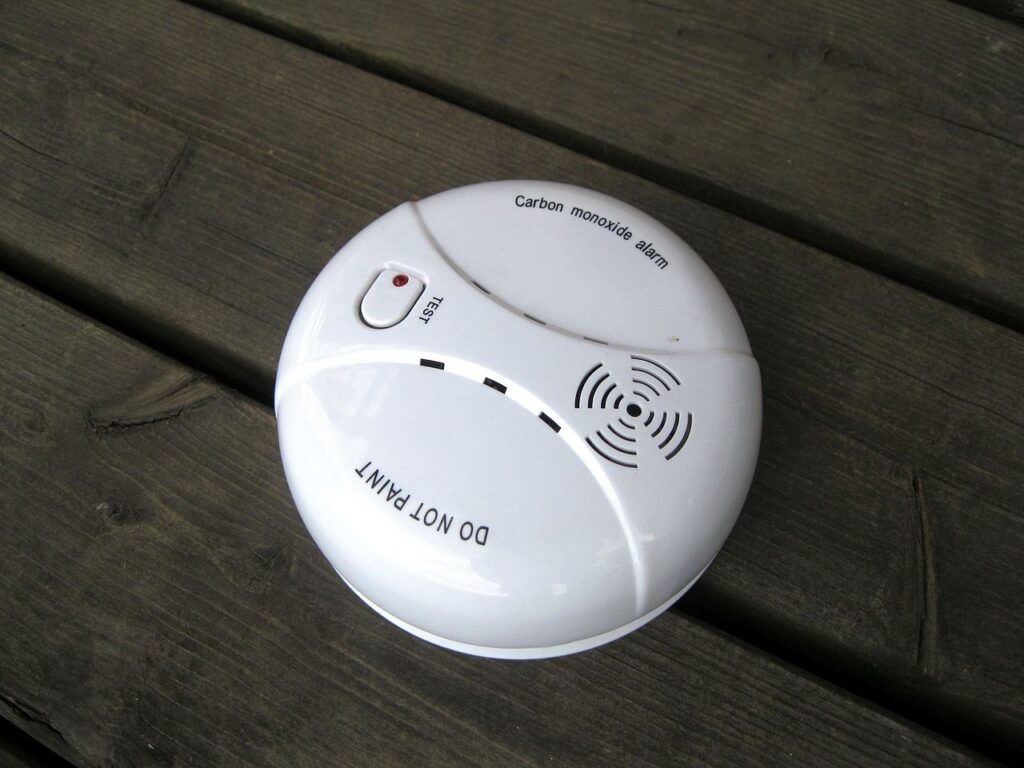
SOUTH CAROLINA – From Greenville to Charleston, South Carolinians have been protected for years, thanks to carbon monoxide (CO) protection measures put in place statewide in 2013. That year, South Carolina was among several states that enacted a new building code that required CO alarms in newly constructed dwelling units and occupancies. Since then, countless lives have been saved from the dangers of this invisible, odorless and potentially fatal gas, as a majority of states have followed suit with similar legislation and code adoption.
However, alarms don’t last forever, and seven years after South Carolina’s first CO alarm requirements were enacted, First Alert, one of the most trusted brand in fire safety, along with health and safety officials, have issued a timely reminder to the public: the need to replace CO alarms as they approach expiration.
As part of its ongoing education efforts, First Alert is partnering with fire departments and safety organizations throughout the country to bring awareness to the importance of replacing alarms as they expire.
“Adoption of CO alarm requirements marked a turning point for protection for South Carolina’s residents, but with busy lives and other priorities, it’s easy to take life-saving measures like installing CO alarms for granted once they’ve been implemented,” said Tarsila Wey, director of marketing for First Alert, a leader in residential fire and CO detection devices. “The anniversary of its enactment is a timely reminder of the importance of protecting what matters most, and an ideal opportunity for us to celebrate the lives that have been saved over the past seven years by making safety a top priority.”
Known as the “silent killer,” CO is a colorless and odorless gas that is impossible to detect without a sensing device. According to the Centers for Disease Control and Prevention, more than 50,000 emergency room visits and over 430 deaths are attributed to CO poisoning in the U.S. each year, making it the leading cause of accidental poisoning deaths in the country. Any fuel-burning appliance, including heaters, fireplaces, furnaces, appliances and cooking sources using coal, wood or petroleum products, are all potential sources of CO. It’s critical to have appliances inspected by certified licensed technicians, educate loved ones on the dangers of carbon monoxide, and develop a family escape plan in the event of a CO emergency.
CO poisoning can cause symptoms such as nausea, headaches, dizziness, chest pain and vomiting that mimic those of many other illnesses, making it difficult to diagnose. In severe poisoning cases, victims can experience disorientation, unconsciousness, long-term neurological disabilities, cardiorespiratory failure or death.
While alarm lifespans may vary by model and manufacturer, back in 2013, a properly maintained CO alarm had a lifespan of approximately five to seven years. Therefore, CO alarms installed when South Carolina enacted its code are likely now due for replacement. As an extra safety measure, most First Alert CO alarms feature end-of-life warning to alert residents to the need for replacement. The end-of-life signal differs significantly from the 85-decibel horn heard in an emergency or during regular testing of the alarm. It also differs from the low-battery chirp, and usually consists of 3-5 short sounds. Check the back of the alarm, as well as the alarm’s user manual, for specific information on these different signals.
“If you can’t think of the last time you installed a smoke or carbon monoxide alarm, chances are, it’s time to replace your old ones,” Wey said. “Installing new alarms, testing them regularly and having and practicing an escape plan are important measures you can take to help protect your family and home. First Alert offers the most advanced CO sensing technologies and latest safety features available, in hardwired, wall mount, plug-in and tabletop versions.”
The last few years have seen significant advancements in technology, extending the lifespans of some to CO alarms to 10 years. First Alert offers 10-year sealed battery CO alarms that eliminate the need for battery replacements. First Alert’s extensive safety portfolio also includes other CO alarm models to meet the needs of any household. For example, battery-powered tabletop models like the CO710 feature a 10-year battery and digital temperature display, with an easy-to-read, backlit LED screen. Other options offer both smoke and CO protection, such as the PRC710V, which offers voice alerts to inform consumers of the location of the specific danger. Another option is the plug-in CO605 model, which plugs into any standard electrical outlet and offers a battery back-up in case of power outages.
In addition to replacing CO alarms as they reach expiration, Wey recommends the following tips and tools for keeping yourself and loved ones safer from the dangers of carbon monoxide:
Important Safety Steps
- Install alarms. CO alarms are the only way to detect this poisonous gas. The National Fire Protection Association (NFPA) recommends installing alarms on every level of the home and near each sleeping area for maximum protection. Also make sure the alarms are installed at least 15 feet away from sources of CO to reduce the possibility of nuisance alarms. It is also important to test alarms monthly and change batteries every six months, unless the alarm is powered by a sealed, 10-year battery.
- Test alarms regularly. All First Alert alarms are equipped with a test/silence button for easy testing.
- Never use generators indoors. In the case of a power outage, portable electric generators must be used outside only (at least 15 feet from your home). Never use them inside the home, in a garage or in any confined area that can allow CO to collect. And, be careful to follow operating instructions closely. Also, refrain from using charcoal grills, camp stoves and other similar devices indoors.
- Be mindful of the garage. Never leave a vehicle running inside an attached garage. Even if the door is open, it is hazardous, as CO can leak into the home.
- Have fuel-burning appliances inspected regularly.Arrange for a professional inspection of all fuel-burning appliances (such as furnaces, stoves, fireplaces, clothes dryers and water heaters) annually.
- Plan Your Escape. To develop an effective escape plan, walk through your home and inspect all possible exits and escape routes. Identify two ways out of each room, including windows and doors. Practice your home emergency escape plan at least twice a year and make sure to plan a meeting spot. That way, if there is an emergency, everyone knows where to meet.
- Call 911. If an alarm sounds, leave the home immediately and move to fresh air. Then call 911 and do not go back into the home until the home is inspected and cleared.
For more information on fire and carbon monoxide safety, visit www.firstalert.com/carbonmonoxide.
If you enjoy what you’re reading, please consider liking us on: Facebook, subscribing to our newsletter and following us on Twitter. Feel free to also join our Facebook groups: Berkeley County, SC Residents: What’s On Your Mind?, Berkeley County Real Estate: Lots & Homes for Sale/Rent and Berkeley County, SC Jobs: Find a Job or Post a Job.
Psst!!! Got something to say and want to reach your neighbors? Not everyone is on social media. Check out our neighbor forum today and start a conversation. It’s easy! No registration/logging in is required to post. We’ll even amplify your forum post on Facebook to reach more people, too. [CLICK HERE TO START THE CONVO]













Recent Comments